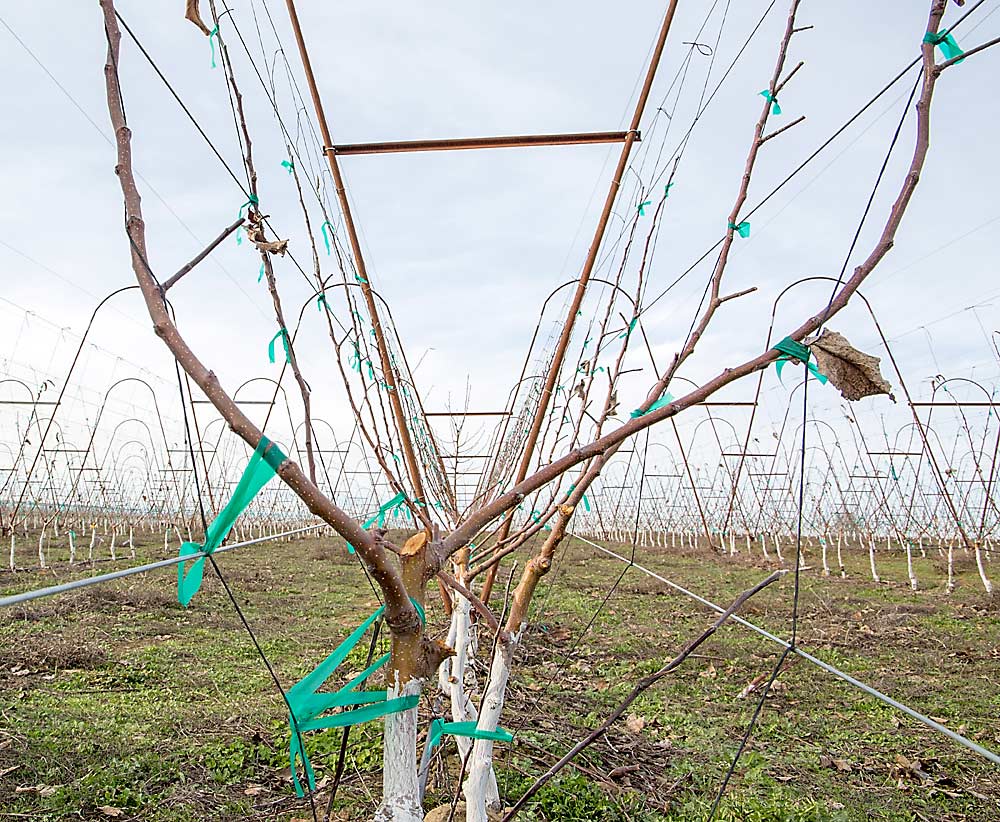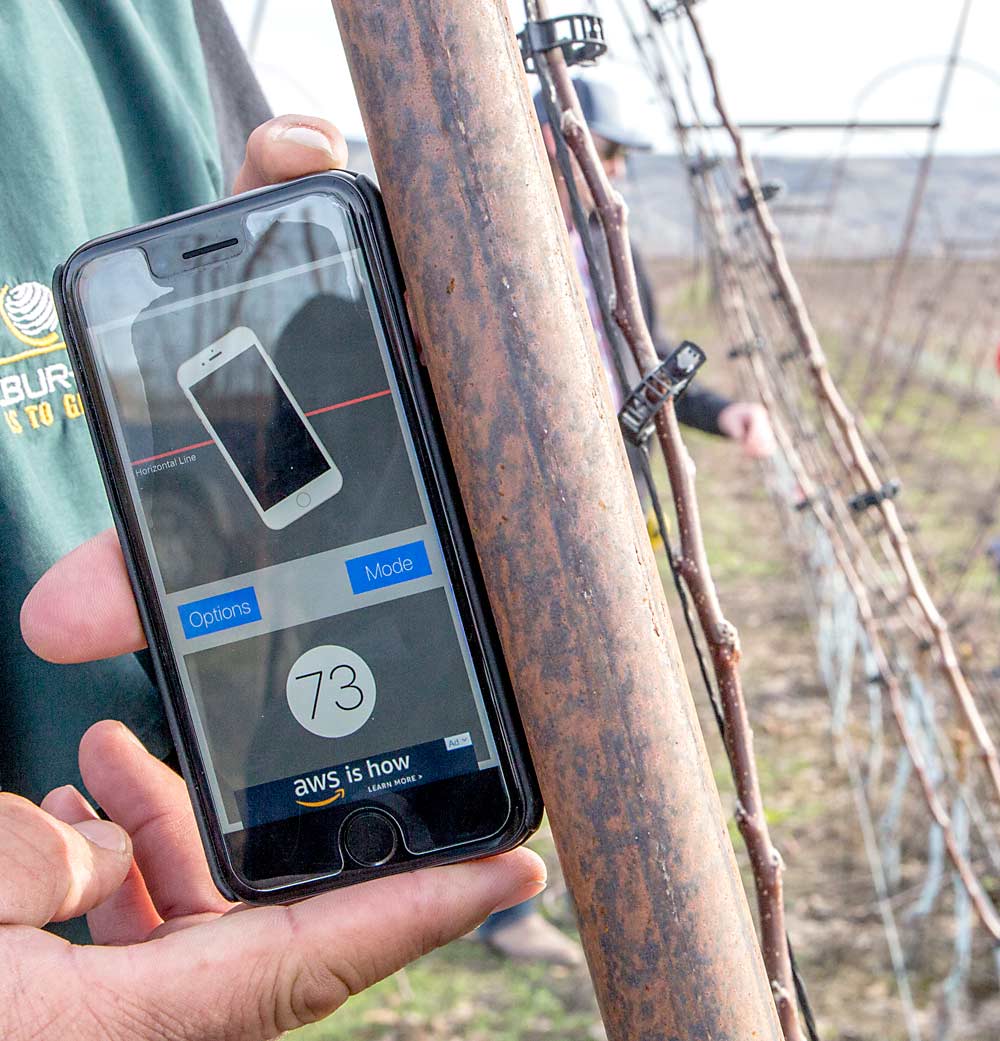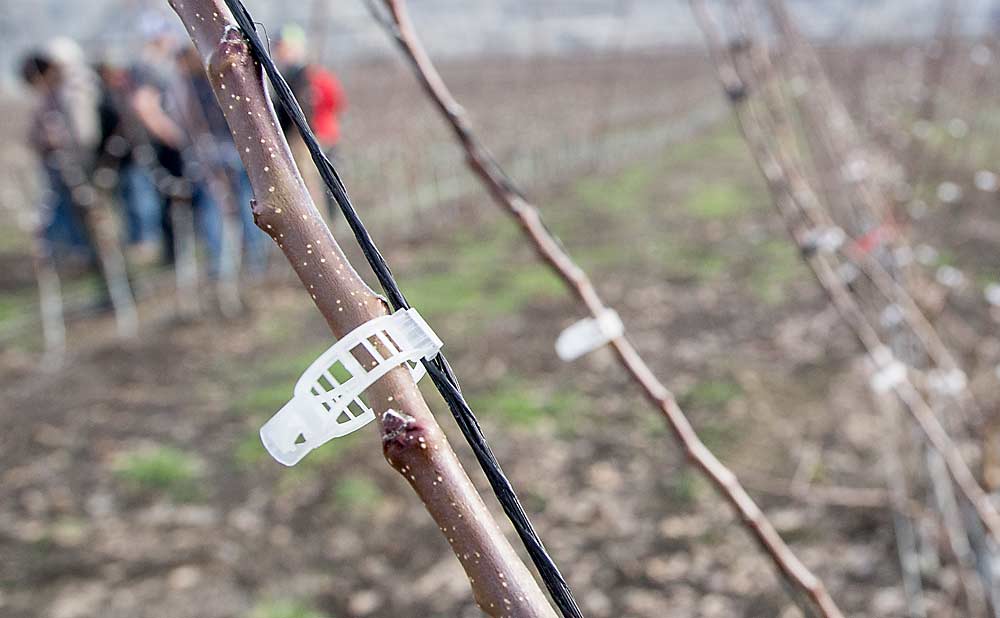
At least two WA 38 growers have taken one suggestion by some Washington State University researchers and given it a twist.
A 90-degree twist.
Keith Oliver and Derek Hill, who farm between Prosser and Benton City, Washington, have opted to adopt the bi-ax orchard system they saw at WSU’s Roza research orchard trial plots, but turned their WA 38 trees perpendicular to the rows. The Roza trees branch out in a plane along the row.
WA 38 is the newest apple from the WSU breeding program and will be marketed under the trade name Cosmic Crisp. Growers throughout the state have been comparing notes about best horticultural practices for the new cultivar. Oliver and Hill discussed their systems with a handful of fellow growers during a March tour of the Columbia Basin Tree Fruit Club.
[/fusion_builder_column]
Oliver, production manager for Olsen Brothers Ranches, and Hill, operations manager for Oasis Farms, liked the idea of the bi-axis tree design to spread out vigor but wanted to create a V-shape to intercept as much light as possible and boost productivity.
Also, Oliver and Hill have trellises, but they may not formally train their branches laterally along the wires, instead letting fruit grow on short branches coming from the two upright leaders. Labor for training laterals can get expensive, they said.
Both planted trees 2 feet apart in 12-foot rows in the spring of 2018.
In 2018, Oliver planted the trees on Budagovsky 10 rootstock, because he couldn’t get ahold of any Geneva roots. Bud.10 is more vigorous than the more common Bud.9, and Oliver hopes that Bud.10 will show the same resistance to fire blight as Bud.9.

Oliver likes to joke that he has a new variety on a new rootstock in a new orchard system.
“Three new things with this block that we don’t have experience with, and maybe it will work,” Oliver said.
WA 38 is known for a vigorous growth habit, so Oliver took pains to curtail vigor, applying only 30 pounds of nitrogen per acre the first year. In hindsight, he wishes he would have pushed the trees harder and plans to fertilize more this year.
He had considered scoring his leaders to encourage lateral shoots but instead opted to just paint them with Promalin (gibberellic acid and benzyladenine) after a friend achieved good results that way.
Oasis Farms planted its WA 38 trees on Geneva 11 rootstock.

Hill is opting not to formally train his trees to lateral trellis wires, instead letting the branches grow more randomly to avoid blind wood and avoid the heavy labor costs.
That marked a decision change for Hill. He planted with the intention of formally training the trees to eight horizontal wires, but pivoted after he saw a similar setup among the test blocks at WSU’s Sunrise research orchard near Wenatchee.
“I changed midstream,” he told the group of tourgoers.
Meanwhile, like many growers, Hill guides his uprights along vertical twine —but he holds them in place with circular tomato clips instead of vinyl tape. •
—by Ross Courtney






Leave A Comment